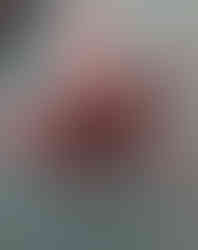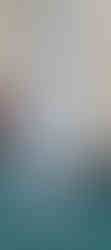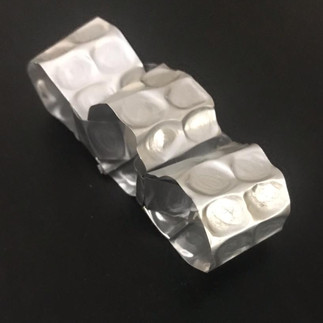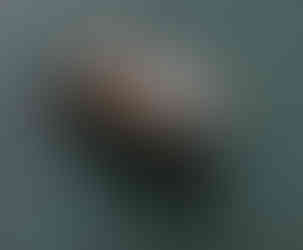I2T Learner's Journey Log:
- Rachel Tom Antony
- Mar 17, 2022
- 9 min read
Updated: Mar 24, 2022
Somewhere something incredible is waiting to be known.
-Carl Sagan
During this project we mainly came across two new concepts; namely, tangible (something that can be touched) and intangible (something that cannot be touched), and through the entire duration we explored and practiced on how to convert the intangible to tangible using variety of materials and techniques.
Part A: Reflection on your Creative and Critical thinking aspect.
Some of my learnings regarding the materials and techniques used were as follows:
Synthetic:-
Nylon Rope:
Techniques learnt/explored:
Through the project I mainly discovered 5 techniques, namely; crocheting (First and second image), tying (third image), weaving (fourth image), unravelling ( fifth image) and burning (Sixth image).
Other learnings:
While burning, I found that only the end of the nylon rope or the unravelled rope burns and melts.
Since burning the nylon rope causes it to melt and this melting property can be used like an adhesive similar to a glue gun. However, in my attempts, the joint end remained stuck only for a few minutes and kept falling apart. This could have been solved by keeping the rope under the heat for more time.
Since the nylon rope is made by twisting three smaller threads, by unravelling those threads one can use it like a cloth thread. Any technique (like crochet, knitting, weaving, tatting etc.) that can be implemented on a cloth thread could be used on these threads as well.
One must be very careful while burning nylon ropes because burning this material can be harmful for health. Try to use this technique in open spaces.
Struggles:
During my explorations, I found it quite hard to use adhesive on these ropes. Even after using fevikwik, the ropes refused to stick. Eventually, I was able to stick them with hot glue gun.
I struggled when it came to trying out certain techniques like tatting etc. The ropes were very slippery making it difficult to use this technique.
I also struggled a lot when it came to tying this material because it kept undoing itself because of it's smoothness.
Plastic hose pipe:
Techniques learnt/explored:
I explored different ways of cutting (first and second image, first row; second row, second image; first image, third row), weaving (first image, second row), bending (Third image, second row), half-cuts (second image, third row).
Other learnings:
Even though half-cuts are possible with this material, the overall structure is not very strong because of it's curved surface
Different pipes have varied properties. This was especially noticeable when it came to cutting the material. I found that using the blade was more appropriate for the black pipe, whereas, the scissors were more suitable for the white pipe.
Even though the pipes belonged to the same broad category, the way they reacted to different situations was very varied. The below shown exploration was my attempt to explore further on this aspect. As seen, even though the same technique is used, both the pipes give out a very different look. The way the cut strips lie is also very different.

Struggles:
Lot of my explorations maintained the pipe-shape rather transforming the form completely.
PVC pipe:
Techniques learnt/explored:
For PVC pipes, I tried several ways of cutting ( Horizontal cuts, spiral, slanted cuts.)
Other learnings:
For my specific pipe, because of the size of the pipe, I wasn't able to try out vertical cuts.
This material tends to produce a lot of kerf when cut with an hacksaw. The cut ends are always require sanding with a sandpaper to get a smooth, clean finish.
The material is very strong and hard to break unless its cut into thing rings.
It is also not malleable.
Struggles:
I struggled when it came to creating any perforations or textures on my pipe because of it's thickness.
I also struggled in creating vertical cuts.
The variety of techniques that I could try out were limited.
I also could not sand down my explorations because of lack of time.
The neatness and uniformity of my cuts are also another aspect in which I struggled.
I should have also tried manipulating the form of the pipe during my explorations.
Sun Board:-
Techniques learnt/explored:
There were mainly two techniques that I focussed on while working with sun board, they were namely, half-cuts and creating cuts to transform the material from stiff to easily bendable.
Other learnings:
Properties like stiffness of a material can be altered through simple cuts.
Cutting this material with an exacto knife or a blade is more better than using a scissor because a scissor ends up pinching the cut corners.
Struggles:
I found it difficult to go beyond what was already explored during the class hours and during my experience with working with this material in other projects. During the project, I felt that whenever the material seemed to have limitations in manipulating, it forced me to think further, but since this material has a lot of possibilities, It made it very hard to come up with novel explorations.
Aluminium:-
Aluminium wire:
Techniques learnt/explored:
In aluminium wires, I explored techniques like; bending (first and second image), tying (third image), crushing (bottom row, right-most), twisting (middle column, second and third image).
Other learnings:
There are a large number of possibilities with this material because of it's malleability.
Single wires are not strong enough to carry even little weight without bending, but twisting two to three wires can avoid this from happening.
Struggles:
In my explorations, I often used aluminium wires as a support rather than as a main component/feature.
I struggled to come up with creative ideas to highlight the use of aluminium wires in my exploration.
I feel like my explorations were very limited and utilised the same known techniques. For this same reason, I felt like my new learnings were very limited.
Aluminium sheet:
Techniques learnt/explored:
I used several techniques like creating perforations (First row), half-cuts (second row, first image), weaving (Second row, second image) folding (second row, third image), curling (third row, first image), twisting (third row, third image, fourth image), cutting (fourth row, second image), creating dents (fourth row, third image).
Other learnings:
I felt that the scissors were the most suitable tool for cutting this material.
One can completely avoid the use of adhesive by simply folding or twisting etc.

(For eg: in the above exploration, I've simply folded strips of aluminium sheet instead of using adhesive.)
Struggles:
While photographing my explorations, I could have also tried to capture how the material and technique influences light and shadows.
Aluminium pipe:
Techniques learnt/explored:
With aluminium pipes, I was able to try out techniques like twisting (first and second image), curling (third image), cutting (fourth, fifth and sixth image), bending (third column, third image), flattening and creating perforations (second row, third image).
Other learnings:
The cut ends of the pipe are always extremely sharp. One must take extra precaution while handling this material.
While twist or bending the pipe, it is best to use a nose plier.
Struggles:
Safety was one aspect that I should have looked into while working with this material.
Cutting the material was also very time-consuming and took a lot of effort.
I also struggled when it came to completely transforming the pipe from a pipe-shape to a completely different form.
Through this project, I was able to look further into many aspects like the malleability, strength, surface finish etc, of a material and manipulate some of them through creating a variety of explorations. This process not only gave me new understandings of the materials used but also made me realise how important it was to work with a material rather than just knowing the theory. It was only when I started interacting with the material that I could understand how it reacted in different situations and environments. For example, it was only when I started cutting through the aluminium pipe using an hacksaw did I realise that one has to turn the pipe multiple times to fully cut through it because the hacksaw starts getting stuck if one tries to cut from one single spot without turning the pipe.
This project also forced me to see the potential and multitude of possibilities of every material. For example, when I was working with a plastic hose pipe, I realised that I could use the half-cut technique on it. I'm certain that I would have never realised or tried it out until I was forced to think out of the box for a project like this.

(plastic hose pipe).
I also have slightly better understanding of tools that were used. For example, while handling an aluminium pipe, nose pliers can come out to be very handy especially when twisting or curling the material. I also have a better idea on how to choose the right tool for different techniques and materials. For example, even though sun board can be cut using scissors, it is better to use an exacto knife or a blade because scissors can pinch the cuts ends of the board.
I also understood aspects like how one can manipulate the properties of a material through simple techniques. For example, the stiffness of certain materials like sun board, MDF etc, can be changed with just some cuts.
(Sun board).
All these different learnings can contribute a lot to my future work because as an design student, there will be many situations where I will have to work with materials and during those times this experience will help. It has also helped me get rid of some of my fears of experimenting and going crazy with material.
There were several concept that I had learnt previously during the Think Lab sessions, that I knowingly or unknowingly utilised during I2T Project. For example; 'Visual Expression', which was a concept that was introduced to us through an activity, where we had to express intangible concepts like threat etc, using just lines. This introduction to a new way of expressing or representing helped when it came to naming my explorations in I2T and in connecting my final form with the emotion I had chosen for my final submission.
[Visual Expression:- Top: threatened), (Right : 3-d representation of the word fragile), (right: fragile).]
'Altering Perceptions' was another activity that also helped while I was in the process of exploring. During this activity we were asked to associate shapes with other objects. The practice of creating such kind of connections/associations helped while I was trying to connect my explorations with emotions.
(Altering Perceptions group work and individual work)
Another activity that took place in Think lab that helped during this project was 'Challenging Assumptions'. This practice of challenging basic assumptions was something that I utilised throughout the entire duration of the project. For example, the assumption that sun board cannot be flexible or the assumption that one cannot use half- cuts on a pipe were challenged during these days.
(Sun board, Plastic hose)

(New possibilities group work)
Think Lab also provided me an opportunity to practice thinking beyond through the activity, 'New Possibilities'. Everyday I felt motivated to try out a new technique even if it seemed unusual to use that particular technique with that specific material.
(Plastic hose, nylon rope and plastic hose pipe, Aluminium sheet)
This brought into existence a lot of unusual and slightly bizarre creation which made the project more interesting.
S.C.A.M.P.E.R. was a technique that was introduced to us to help in idea generation. Since I2T was a project that required constant generation of new ideas, use of techniques etc, this technique became very handy.
[S.C.A.M.P.E.R. (individual work), combing two techniques examples]
The use of this technique is evident because whenever I felt like I was running out of ideas, I simply tried combining two previously tried out ideas to produce new results.
Part B: Concept note.
Name of creation: Empty vessel
Tangible refers to anything that can be touched. On the other hand, intangible refers to anything that cannot be touched, for eg: thoughts, feelings, ideas, sound etc. This journey started from the intangible and slowly moved to the tangible through a very systematic, step-by step process The emotion that I wanted to capture was the feeling of emptiness and in order to do so, I first started with creating categories like colour, form material etc, to visualise the intangible. Below mentioned are some of my findings and conclusions regarding each of these categories:
Form of elements: There were two forms that immediately came into my mind when I thought of the feeling of emptiness. They were the spiral shape and hollow pipe-like shape. This was because the spiral shape has a never-ending, repetitive pattern that helps communicate this feeling and the hollow pipe reminds me of things like a hole which again gives a sense of emptiness.
Final form: For the final form, I wanted something that reminded me of an empty vessel, Below shown were some of my initial ideas.

(Ideas for final form)
However I eventually thought that I should not prescribe to a literal vessel shape, instead I should try to further modify this form. Thus, I eventually came up with the below shown form.

(Digital drawing of final form)
Colour: In terms of colour, I felt the lack of colour would best represent this feeling. Thus I decided to go for black and white. The reason why I went for both black and white was because through these both, I wanted to communicate the two aspect that were intrinsic to this emotion; namely, depression that is represented through black and the blankness or the void through white.
Material: My choice of material was based on two aspects, the technique that was going to be used and the colour. Therefore, I came to the final decision of using sun board and a black plastic hose pipe.

Eventually through these findings I was able to create a final form. Below shown was my final idea:


(Full-scale drawing:)
Final Model:
Name of creation: Empty Vessel.







































































































































































Comments